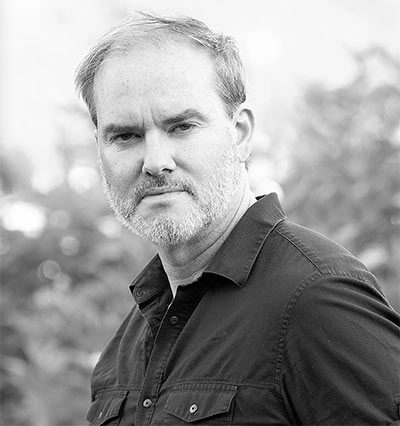Tiny Habits for Big Brain Health Gains: The Neuroscience of Small Changes
.elementor-widget-text-editor.elementor-drop-cap-view-stacked .elementor-drop-cap{background-color:#69727d;color:#fff}.elementor-widget-text-editor.elementor-drop-cap-view-framed .elementor-drop-cap{color:#69727d;border:3px solid;background-color:transparent}.elementor-widget-text-editor:not(.elementor-drop-cap-view-default) .elementor-drop-cap{margin-top:8px}.elementor-widget-text-editor:not(.elementor-drop-cap-view-default) .elementor-drop-cap-letter{width:1em;height:1em}.elementor-widget-text-editor .elementor-drop-cap{float:left;text-align:center;line-height:1;font-size:50px}.elementor-widget-text-editor .elementor-drop-cap-letter{display:inline-block}
This blog explores the concept of tiny habits and their significant impact on brain health, backed by neuroscience. It defines tiny habits, explains the neuroscience of habit formation, and provides practical examples of small changes that can enhance brain health. By understanding the science behind these small changes, readers can be motivated to incorporate tiny habits into their daily routines for lasting improvements in brain health.
Understanding Tiny Habits
In the journey towards enhancing our brain health, the concept of tiny habits emerges as an effective tool. Unlike larger, more daunting Lifestyle changes that can often feel overwhelming and unsustainable, tiny habits are small, manageable actions that can be easily integrated into our daily routines. These are the incremental steps that, when consistently practiced, lead to significant and lasting changes.
The psychology behind habit formation reveals that our brains are more receptive to small, achievable goals. This is because they require less cognitive effort and emotional investment, making it easier for us to commit to and maintain them. At the heart of this process is neuroplasticity, our brain’s remarkable ability to reorganize itself by forming new neural connections throughout life.
Each time we practice a tiny habit, we strengthen these connections, gradually rewiring our brain. This neuroplasticity is pivotal in habit formation, as it allows our brains to adapt and evolve, turning these tiny habits into natural, automatic behaviors. By embracing tiny habits, we harness the power of neuroplasticity and practical brain science for improved brain health and overall well-being.
The Neuroscience of Habit Formation
Understanding the neuroscience of habit formation offers insights into how we can effectively change our behaviors for better brain health. At its core, the brain forms and maintains habits through a complex network of neural pathways. Central to this process is the basal ganglia, a group of structures deep within the brain that play a crucial role in developing habits, decision-making, and behavioral patterns. When we perform an action repeatedly, the basal ganglia helps to encode this behavior into our neural circuitry, essentially creating a ‘shortcut’ that makes future executions of the behavior more efficient and less energy intensive.
Once habits are formed, they can feel almost automatic. The key to solidifying these habits lies in repetition and consistency. Each time a behavior is repeated, the neural pathways involved in executing that behavior are strengthened. This process, known as synaptic plasticity, is the brain’s way of adapting to new experiences and information. By consistently engaging in a particular habit, we reinforce these neural pathways, making the behavior more ingrained and automatic. This highlights how our brains are wired to respond to repeated actions and routines.
Understanding Tiny Habits
Tiny habits, though small in scale, are mighty in impact, and understanding their key components reveals why they stand apart from more extensive lifestyle changes.
- Keep it simple. Tiny habits are straightforward and easy to implement, requiring minimal effort or resources. This simplicity is what differentiates them from larger habits, which often demand significant time, energy, or planning.
- Be specific. Tiny habits are highly specific, targeting a particular action at a specific time or in a specific context. This precision makes them easier to remember and follow through on unlike vaguer, broader goals.
- Start small and build. Tiny habits focus on gradual improvement and building upon small successes in an incremental approach. This approach fosters a sense of achievement and avoids the overwhelm that can accompany more ambitious goals.
- Pair with your existing routines. Tiny habits are designed to seamlessly fit into existing routines, making them more sustainable over the long term.
Each of these components plays a crucial role in the effectiveness of tiny habits, making them a unique and powerful tool for building a brain-heathy lifestyle.
How to Incorporate Tiny Habits for Brain Health
These small but mighty actions are easy to adopt and can lead to significant improvements in brain health. Below, I offer two tiny habit examples as a guide.
Example 1: Breathe
Tiny Habit: Practice one minute of deep breathing in bed before Sleep.
Rationale: Breathwork before bed can support optimal sleep by activating the body’s relaxation response, reducing Stress and calming the mind, thereby facilitating a smoother transition into deep, restorative sleep.
Goal: Incrementally increase the duration of deep breathing before bed as needed to meet your personal restfulness goal.
*Review our previous blog on the sleep-brain connection to sleep well and think well.
Example 2: Hydrate
Tiny Habit: Drink an 8-ounce glass of water within the first 15 minutes of being awake in the morning.
Rationale: Drinking an 8-ounce glass of water within the first 15 minutes of waking up helps to rehydrate your body, kickstart your metabolism, and flush out toxins, setting a healthy tone for the day ahead.
*Review our previous blog on the importance of water for the brain and body.
Conclusion
I hope this blog may inspire you to try a tiny habit to improve a specific area of your personal brain health and wellness in 2024 and beyond. A key to tiny habits is to make the habit small, short in duration for a commitment, and part of your daily routine. Aim to associate new habits with old habits. A bonus is to stack habits to create a morning routine that energizes you for the day and an evening routine that prepares you for quality sleep. Cheers to a New Year filled with vibrant health, peace and joy.
In brain health and wellness,
Krystal
The post Tiny Habits for Big Brain Health Gains: The Neuroscience of Small Changes first appeared on Virtual Brain Health Center.
Dr. Krystal L. Culler, DBH, MA is a holistic brain health expert with nearly twenty years of experience working with individuals with brain-related diagnoses, their families, providers, and advocacy organizations. She has received numerous international and national awards for innovation in brain health programs and wellness services with a global impact spanning 55+ countries. She is a Doctor of Behavioral Health with an educational background in the behavioral sciences (psychology, gerontology, and sociology). She is the Founder of the Virtual Brain Health Center. Her mission: brain care for all.


























